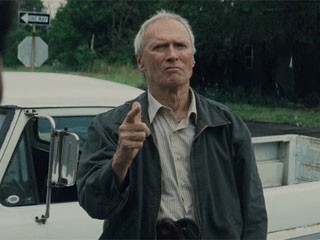Let's not kid ourselves. Comin' At Ya! is a rotten movie. It has the barest amount of plot it can muster and about as much dialogue. Possibly less. Point in fact, it barely qualifies as a movie. So much so that nobody found a reason to release it on home video in the U.S. until Rhino put out a poor anaglyphic VHS and DVD in 1999, 18 years after it was first released. Its prior home video release was in the mid 80s in the old field sequential format on Japanese VHD. Now its managed a 3D Blu Ray release with the humorous sticker proudly trumpeting the 2D version is included. Please. There's barely a reason to watch it in 3-D, let alone flat.
The bare premise is that after white slavers kidnap his wife (Victoria Abril) on their wedding day, H.H. Hart (Tony Anthony--God help me, that's his name) gets pissed off and angry and decides to hunt them down. Hart rescues his wife and a bunch of other women, the white slavers recapture them, kill them, and then Hart kills all the white slavers. The End.
If you're thinking that my words are not doing justice to this movie--that surely there must be more to it than that--let me reassure you. No, there really isn't. This is a movie whose plot summary would fit on a postage stamp with room left over.
 In an effort to perhaps make the film more interesting, the filmmakers added a gimmick to the gimmick for the reissue. Calling it "Noir 3-D", they went back and made certain shots black and white, or part black and white. It's meant to add a visual flair to the movie, but it's actually an epic fail. It's actually more distracting than interesting.
In an effort to perhaps make the film more interesting, the filmmakers added a gimmick to the gimmick for the reissue. Calling it "Noir 3-D", they went back and made certain shots black and white, or part black and white. It's meant to add a visual flair to the movie, but it's actually an epic fail. It's actually more distracting than interesting.Like almost every 3-D movie from The Bubble in 1966 to the My Bloody Valentine 3-D in 2009, Comin' At Ya! lost its mind with gimmick shots. Bats, rats, playing cards, guns, knives, spears, flaming arrows, gold coins, coffee beans, and yes a baby's bare ass are flung, tossed, chucked, dropped and otherwise thrust at the audience over the course of 90 minutes. To put it another way, this movie's 3-D is about as subtle as the most garish Hawaiian shirt you can imagine. And while this level of gimmicky goodness does seem to be a lost art today, this particular example is practically a rape of your eyeballs.
It is an interesting dilemma. On the one hand, if you have a 3D TV and are sick of watching 3D movies that have few to no gimmick shots, the 3D Blu Ray of Comin' At Ya! might just be what the doctor ordered. On the other hand, the 3D Film Archive did not work on this release, so there is no correction to the alignment. This means that the film looks fairly brutal. As often happened back then, some of the gimmick shots get way too close to the camera. Virtually every 3D movie of the 70s and 80s did this, causing shots that made you feel like your eyeballs were about to be ripped out of your head.
 If you are a completionist of either vintage 3-D or 3-D in general, then absolutely get this disc. If, however, you are subject to headaches from 3-D movies, you may want to skip this disc. I've watched 3-D movies for almost 35 years and even I had difficulty with it. I ended up watching the movie in chunks, partly because of how bad the movie itself is and partly because I need to rest my eyes from the constant assault being inflicted on them.
If you are a completionist of either vintage 3-D or 3-D in general, then absolutely get this disc. If, however, you are subject to headaches from 3-D movies, you may want to skip this disc. I've watched 3-D movies for almost 35 years and even I had difficulty with it. I ended up watching the movie in chunks, partly because of how bad the movie itself is and partly because I need to rest my eyes from the constant assault being inflicted on them.I am glad to have finally seen the movie in a proper 3-D format. The old Rhino VHS made a pretty brutal to watch movie even more so. I think the restoration could have concentrated less on the black and white and more on correcting the 3-D, but it is what it is. Comin' At Ya! is the first of the 18 3-D movies released between 1981 and 1985, so as a piece of 3-D history, like the equally awful Bwana Devil and The Stewardesses before it, it rates a viewing if you're a 3-D buff. Otherwise, there are better examples of this sort of thing, even from that decade.
















































